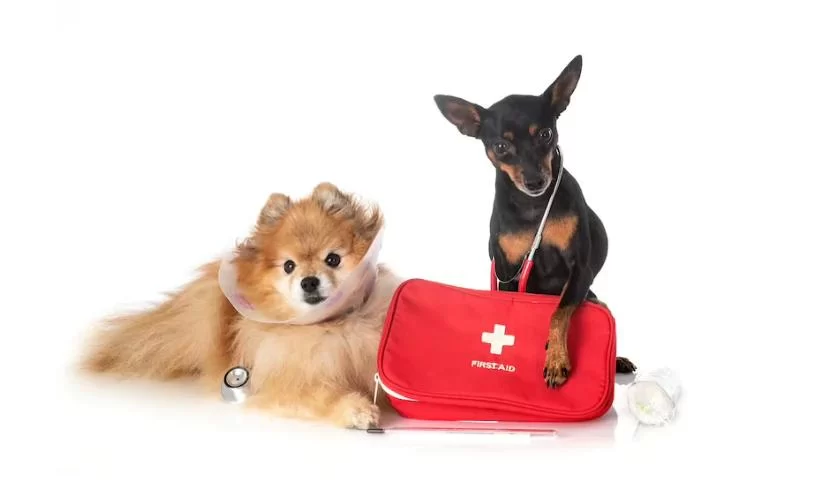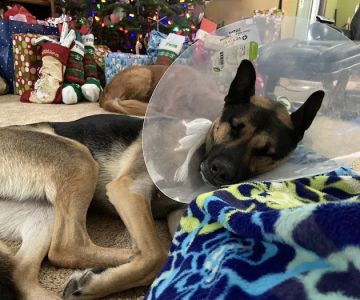Understanding Emergency First Aid for Pets
As a pet owner, it’s crucial to be prepared for the unexpected. Just like humans, pets can face emergencies that require immediate attention. Whether your dog has been injured, your cat has ingested something harmful, or your rabbit is suffering from heatstroke, knowing what to do in the critical moments can mean the difference between life and death. In this article, I’ll walk you through the essential emergency first aid techniques every pet owner should know to keep their furry friends safe in an emergency.
How to Handle a Pet Emergency: Basic First Aid Steps
Emergencies can be terrifying, especially when it involves your beloved pet. It's easy to panic, but staying calm and acting quickly is key. The following steps are fundamental in pet first aid and can help you manage the situation until you can get your pet to a vet.
1. Stay Calm and Assess the Situation
The first and most important step in any emergency is to stay calm. Pets can sense when their owners are stressed or anxious, and this can make them even more agitated. Take a few deep breaths and quickly assess the situation. Is your pet bleeding? Are they unconscious? Do they seem to be choking? Understanding the severity of the situation will help you prioritize your next steps.
2. Check for Breathing and Heartbeat
If your pet is unresponsive or appears to be in distress, it’s crucial to check their vital signs. For dogs and cats, place your hand over their chest and feel for a heartbeat. You can also check if their chest is rising and falling, which indicates breathing. If they’re not breathing or their heart has stopped, you’ll need to perform CPR.
3. Performing CPR on Pets
If your pet is not breathing or their heart has stopped beating, performing CPR can save their life. Pet CPR is different from human CPR, so it’s important to follow these specific steps:
- For small pets, such as cats and small dogs, place them on their right side on a flat surface.
- For larger dogs, position them on their right side as well, but you may need to apply more force when performing chest compressions.
- Place your hands over the ribcage, just behind the elbows, and press firmly down at a rate of 100 to 120 compressions per minute.
- If you can’t get air into their lungs through mouth-to-nose breathing, perform compressions alone until you can get professional help.
4. Control Bleeding
If your pet has a wound and is bleeding heavily, it’s important to stop the bleeding as soon as possible. Apply direct pressure to the wound with a clean cloth or bandage. If the bleeding is coming from a limb, you can also elevate the leg to help reduce blood flow. If the wound is on the head or neck, keep the pet’s head slightly elevated to minimize blood flow to the area.
5. Treating Choking in Pets
Choking can occur if your pet has swallowed something they can’t pass through their throat. It’s important to recognize the signs of choking, such as gagging, coughing, or pawing at the mouth. If you see your pet choking, follow these steps:
- Check their mouth for any visible obstruction. If you can see it and can easily reach it, carefully remove it.
- If the object is lodged deeper, perform the Heimlich maneuver for pets. For small dogs, hold them upside down and give a sharp thrust to their belly. For larger dogs, perform abdominal compressions by applying pressure to their stomach just below the ribcage.
- If the choking persists, get your pet to a veterinarian immediately.
Common Pet Emergencies and How to Respond
While the basic first aid techniques above can apply to various emergencies, some specific situations require specialized responses. Below, I’ve outlined a few common pet emergencies and how to handle them:
1. Heatstroke
Heatstroke can be a life-threatening condition, especially for pets with short snouts, like bulldogs or pugs. If your pet is panting excessively, drooling, or showing signs of weakness or confusion, they may be suffering from heatstroke. Move them to a cool area immediately and offer water. If their temperature is above 104°F, dampen them with cool water and call your vet right away.
2. Poisoning
If you suspect your pet has ingested something toxic, such as chocolate, plants, or household cleaners, it’s critical to act quickly. Call your veterinarian or the ASPCA Animal Poison Control hotline immediately. Do not induce vomiting unless instructed by a professional, as some substances can cause more damage if regurgitated.
3. Fractures and Sprains
Fractures and sprains are common injuries in pets, especially active dogs. If you notice your pet limping or unable to put weight on a leg, they may have a fracture. Try to immobilize the injured area by carefully wrapping it with a bandage or splint and keep your pet as still as possible until you can get them to the vet.
Why Pet First Aid is So Important
Knowing how to administer first aid to your pet can drastically improve their chances of survival in an emergency. By acting swiftly and confidently, you can stabilize your pet and provide them with the best chance of recovery. It’s not just about knowing how to perform CPR or control bleeding – it’s about being prepared and educated so that you can make the right decisions under pressure.
In addition to learning first aid skills, it’s also a good idea to take a pet first aid class or workshop. These courses can provide hands-on experience and teach you advanced techniques, such as how to deal with allergic reactions or how to handle a pet that is having a seizure.
Conclusion
Being a pet owner comes with the responsibility of ensuring your pet's safety and well-being, especially during emergencies. The first aid steps outlined in this article can be life-saving in critical situations. Stay calm, act quickly, and always seek professional help when needed. By understanding basic emergency first aid, you can provide your pet with the best care possible and minimize the risk of further injury or harm.












